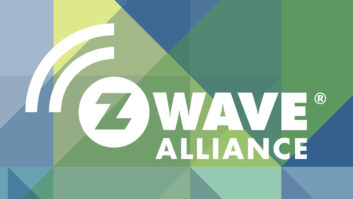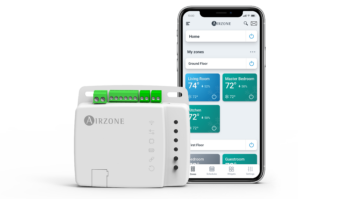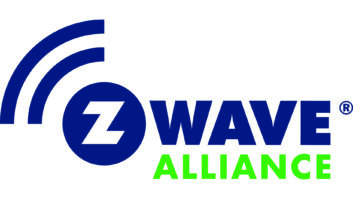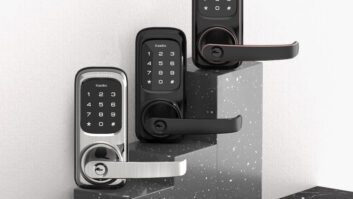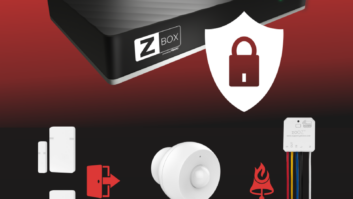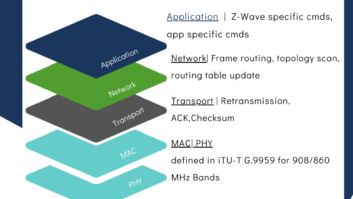At least seven U.S. suppliers this year will deliver home automation products that incorporate Z-Wave wireless technology, which is designed for retrofit installations at mainstream prices.
Z-Wave developer Zensys expects to make further market-share inroads with the fourth-quarter volume production of a second-generation Z-Wave chip that will cut the cost of Z-Wave products in half, said Zensys marketing VP Mike Dodge.
Z-Wave is a low-power, 9.6kbps mesh-network protocol that, when combined with wireless technology, delivers two-way wireless-remote control over lighting, appliances, garage-door openers, thermostats and other home systems from handheld or tabletop remotes located anywhere in the house. The technology also makes it possible to integrate the control of Z-Wave home systems. Pressing a garage-door remote, for example, could also turn on select indoor and outdoor lights.
Z-Wave is positioned as a lower cost option to control systems built on proprietary wireless technologies. Prices come close to those of devices using low-end powerline-network technologies, described by Dodge as not very reliable in multiroom installations.
Z-Wave delivers wireless control over home lighting systems for as little as $750 in a 3,500-square-foot house, excluding installation, but installation is well within the capacity of many do-it-yourselfers, he said. A wireless system based on proprietary technology could cost as much as $10,000, excluding installation, he noted.
Like the high-end wireless home-automation systems, Z-Wave devices do full-range dimming and create lighting scenes, up to 32 in the case of some Z-Wave products, he said.
Because of its mesh-network technology, each device acts as a repeater to extend the range of a Z-Wave remote, making separate repeaters unnecessary.
By the end of 2004, at least seven companies will be marketing products based on a Zensys-designed chip that incorporates Z-Wave and Zensys-proprietary 900MHz radio technology. They will also be interoperable. The protocol can also be married to 2.4GHz radios, Dodge noted.
In mid 2003, Westwood, N.J.-based Smart Products, marketer of the Home Pro brand, was the first to begin offering Z-Wave products incorporating the chip. The products, marketed to home-automation distribution channels, include light switches at about $40 to $50 and wireless remotes priced up to $70. Lamp and appliance modules at $30 to $40 plug into a wall outlet to control lamps or appliances plugged into it.
Late last year, Sylvania launched a similar line targeted to lighting showrooms. Sylvania will be followed in June by Intermatic, which will launch eight SKUs and deliver 30 by the end of the year.
The Intermatic line will include the first Z-Wave in-wall power receptacle, Dodge said. The $30 receptacle will make it unnecessary to plug a Z-Wave module into a standard wall outlet. For consumers who don’t want to change out a light switch, Intermatic will also offer a $30 screw-in adapter that consumers can screw into an in-ceiling light socket. The company will also offer one of the first Z-Wave thermostats, priced at about $50.
Intermatic markets timers, outdoor lighting, and pool and spa equipment.
Techniku and Wayne Dalton are two other suppliers planning to deliver products this year. Wayne Dalton, manufacturer of garage doors and electric garage-door openers, plans a system that activates a lighting scene when the garage door is opened, Dodge said. Techniku manufactures small electric motors for the suppliers of motorized window treatments.
Other companies planning to market Z-Wave systems this year in the United States are HomeSeer, CasaWorks and HAL, Dodge said.
Companies using Zensys’ second-generation chip, also an ASIC (application-specific integrated circuit), will be able to lower the price of products, perhaps by a third, because the chip will be half the cost of the current chip, Dodge said. The chip will ship in volume in the fourth quarter.
At the end of 2005, the company plans a ROM chip that could bring the price of a light switch down to $10 and plug-in modules down to $15, matching the pricing on the low end of X-10 powerline, Dodge said. The price of X-10 plug-in modules is between $10 and $15, and X-10 light switches range from $25 to $80, depending on the quality, he said.
Also in the works: a Z-Wave USB adapter that will enable existing PC-based home-control software to control Z-Wave-equipped devices. The software permits remote monitoring and control of home systems from a PC located anywhere in the world.




